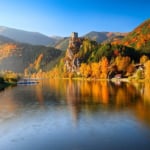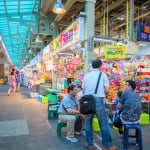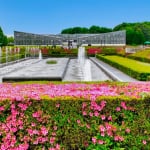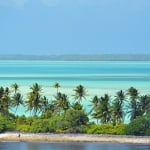Name: Ruins of Hara Castle
Address: 859-2412 Otsu, Minamiarima-cho, Minamishimabara City, Nagasaki Prefecture
Official/Related Site URL: http://himawari-kankou.jp/spot/5/36/
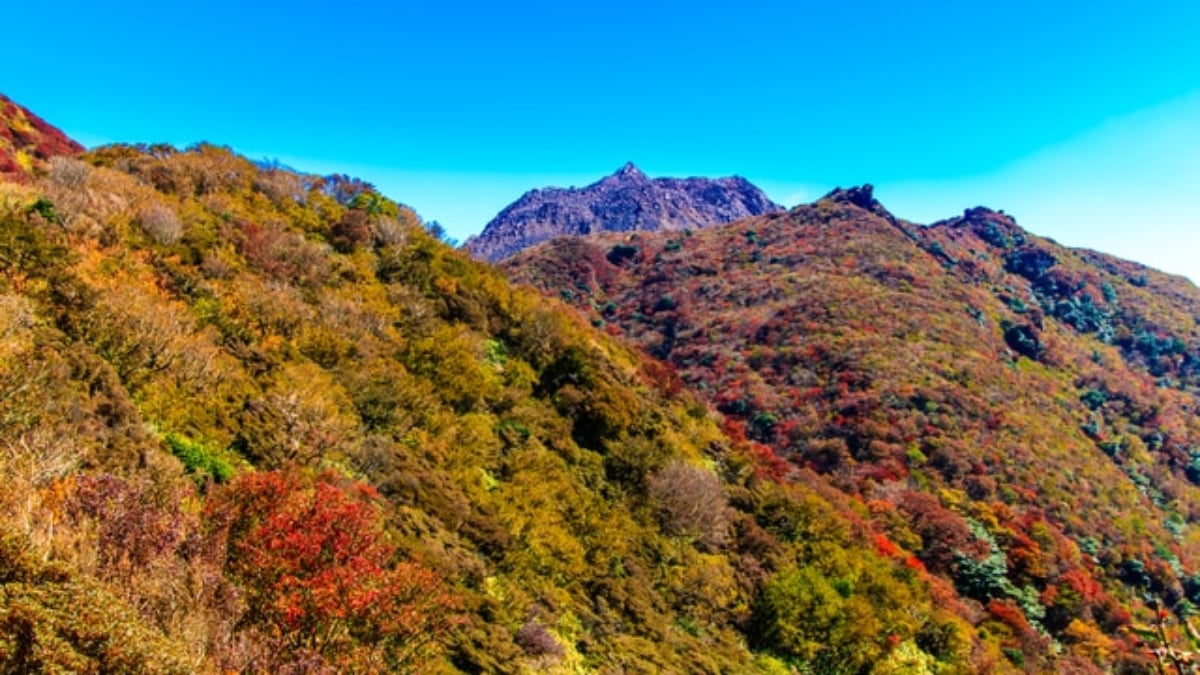
24 recommended spots to visit in Minamishimabara City, the site of the Shimabara Rebellion!
Minamishimabara City is located in the southern part of the Shimabara Peninsula in Nagasaki Prefecture. In the central part of the city, you’ll find important historical tourist spots that connect the history of Japan and Christianity, such as the ruins of Hara Castle—the stage of the Shimabara Rebellion—and the ruins of Hinoe Castle, the residence of the Christian feudal lord Arima.
The southern part of Minamishimabara City is also one of the main areas of the Shimabara Peninsula Geopark and serves as the starting point for the popular dolphin-watching cruises.
Looking to the north, you’ll see Mount Unzen, a symbol of the Shimabara Peninsula that spans Shimabara City, Minamishimabara City, and Unzen City. In the former Fukae Town area of Minamishimabara City, the scars of the great disaster caused by the 1991 eruption of Mount Unzen's Fugen-dake and the resulting mudflows still remain today.
We now present 24 must-visit tourist spots in Minamishimabara, a city wrapped in history and nature!
table of contents
[x] close
24 recommended spots to visit in Minamishimabara City, the site of the Shimabara Rebellion!
- 1. Ruins of Hara Castle
- 2. Arima Christian Heritage Museum
- 3. Hara Castle Onsen
- 4. Dolphin Watching
- 5. Nita Pass Second Observatory
- 6. Debris Flow Disaster House Preservation Park
- 7. Ōnogoba Erosion Control Future Center
- 8. Tawaraishi Observatory
- 9. Fukae Archaeological and Eruption Disaster Museum
- 10. Tonosumi Falls
- 11. Ayukaeri Falls
- 12. Tanimizu Terraced Rice Fields
- 13. Arie Kura Tour
- 14. Kirishitan Gravestone
- 15. Kuchinotsu Port
- 16. Kuchinotsu Historical and Folklore Museum / Maritime Museum
- 17. Hayasaki Basalt
- 18. Futago Rock
- 19. Hanafusa Observatory
- 20. Festivitas Natalis
- 21. Marine Festa in Kuchinotsu
- 22. Mount Iwado
- 23. Seibo Park
- 24. Ruins of Hinoe Castle
- ◎ Summary
1. Ruins of Hara Castle
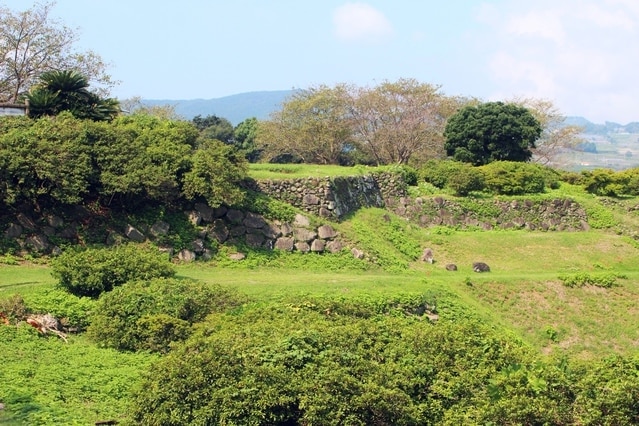
Hara Castle is famously known as the stronghold where Amakusa Shirō and other rebels barricaded themselves during the Shimabara Rebellion. Originally, it was the castle of the Arima clan, warlords based in Minamishimabara City who expanded their power across Nagasaki Prefecture. In its time, the castle was so beautiful that ships sailing offshore would forget the sunset, earning it the nickname “Castle of Dusk.”
After a four-month siege, the castle fell to the shogunate’s all-out assault. As a warning to others, the castle was then thoroughly destroyed. Today, only traces of the moat and stone walls remain, but they are more than enough to evoke the memory of the fierce battle that is etched into Japanese history.
In the main enclosure stands a statue of Amakusa Shirō, created by Seibo Kitamura, the same artist who made Nagasaki’s Peace Statue. Shirō’s grave is also located here. Just below the main enclosure is the “Honekami Jizō,” a memorial that honors the dead from the rebellion—regardless of whether they were rebels or shogunate forces. This is truly a must-visit spot when touring Minamishimabara.
2. Arima Christian Heritage Museum
Minamishimabara City is actively working to have Christian-related historical sites, centered around the Shimabara-Amakusa Rebellion, registered as World Heritage Sites. As part of that initiative, the Arima Christian Heritage Museum was built in 2014.
Inside the museum, a wealth of exhibits and materials trace the history of Christianity’s introduction, growth, and eventual suppression. Thanks to Minamishimabara’s deep ties to the history of Christian culture in Japan, the museum offers a remarkably high-quality and comprehensive presentation.
It is also located close to the ruins of Hara Castle, so if you're visiting Minamishimabara for a historical tour, this is a spot you’ll definitely want to include.
Name: Arima Christian Heritage Museum
Address: 1395 Otsu, Minamiarima-cho, Minamishimabara City, Nagasaki Prefecture
Official/Related Site URL: http://www.city.minamishimabara.lg.jp/sekaiisan/page4810.html
3. Hara Castle Onsen
Did you know there’s a hot spring spot located right beside the historic site of the tragic Hara Castle?
The sodium bicarbonate spring water, pumped from 400 meters underground, is known for making the skin soft and smooth, earning it the nickname “beauty bath”! You can enjoy a slow and relaxing soak while gazing out at the majestic Ariake Sea.
If you’re visiting Hara Castle Onsen, the nearby offshore area called “Shirasu” is also highly recommended. It’s a white sandbank formed by a very rare plant species known as “Lissocampanum.” There are only two places in the world where this phenomenon exists—including here in Minamishimabara! However, Shirasu only appears during extreme low tide. So, plan your visit around the 3rd or 4th day of spring tides from April to July when the tides are at their lowest.
Name: Hara Castle Onsen
Address: 133 Tei, Minamiarima-cho, Minamishimabara City, Nagasaki Prefecture
Official/Related Site URL: http://www.harajoumasago.jp/index.html
4. Dolphin Watching
Off the coast of Minamishimabara City, about 300 wild bottlenose dolphins reside. Watching them from a boat is one of the most popular activities among tourists visiting Minamishimabara! You can observe them swimming gracefully in search of food or performing spectacular jumps.
Dolphin-watching cruises depart from three locations: Minamiarima-cho, Kuchinotsu-cho, and Kazusa-cho in Minamishimabara City. People of all ages can join. The tour takes about an hour and is offered year-round, so you can enjoy it whenever you visit Minamishimabara—a major plus.
Name: Dolphin Watching
Address: 133 Tei, Minamiarima-cho, Minamishimabara City, Nagasaki Prefecture, among others
Official/Related Site URL: http://www.nagasaki-tabinet.com/tour/62517/
5. Nita Pass Second Observatory
The former town of Fukae, now part of Minamishimabara City, suffered extensive damage from pyroclastic flows during the 1991 eruption of Mount Unzen’s Fugen Peak. Today, Mount Unzen is in a calm state, and tourist numbers are gradually returning.
To get a close-up view of Mount Unzen, the “Nita Pass Second Observatory” is highly recommended. From here, you can see the lava dome of Heisei Shinzan formed during the eruption, and the path of the debris flow down the Mizunashigawa River.
In spring, azaleas bloom; in autumn, the leaves turn vibrant colors—making the observatory area a scenic delight throughout the year! On clear days, you can even see the Kirishima mountain range and smoke rising from Sakurajima in Kagoshima Prefecture far in the distance.
Name: Nita Pass Second Observatory
Address: Bo, Fukae-cho, Minamishimabara City, Nagasaki Prefecture
Official/Related Site URL: http://www.nagasaki-tabinet.com/guide/528/
6. Debris Flow Disaster House Preservation Park
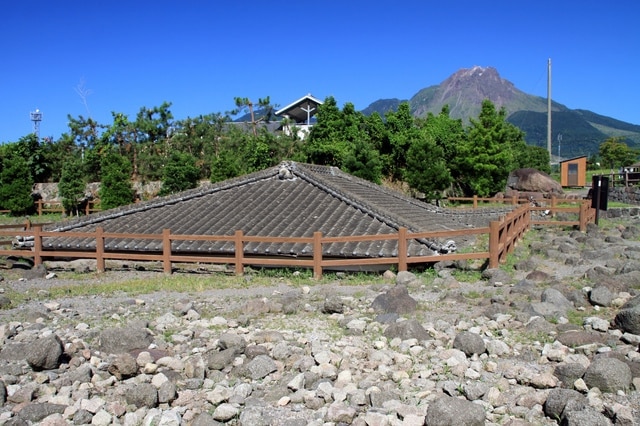
Next to the roadside station "Mizunashi Honjin Fukae" stands a row of houses buried up to their roofs in earth, creating an overwhelming presence. The "Debris Flow Disaster House Preservation Park" preserves residential buildings that were struck by a debris flow in their original state, conveying the sheer scale of the damage even today. It’s a rare facility where you can feel the terror of volcanic disasters and the importance of disaster prevention firsthand.
Eight houses are displayed outdoors and three indoors, so you can explore even on rainy days while sightseeing in Minamishimabara. You can also enjoy meals and shopping at the roadside station afterward. The fact that admission is free is also a welcome bonus for tourists.
Name: Debris Flow Disaster House Preservation Park
Address: 6077 Tei, Fukae-cho, Minamishimabara City, Nagasaki Prefecture
Official/Related Site URL: http://mizunashi-honjin.co.jp/publics/index/15/
7. Ōnogoba Erosion Control Future Center
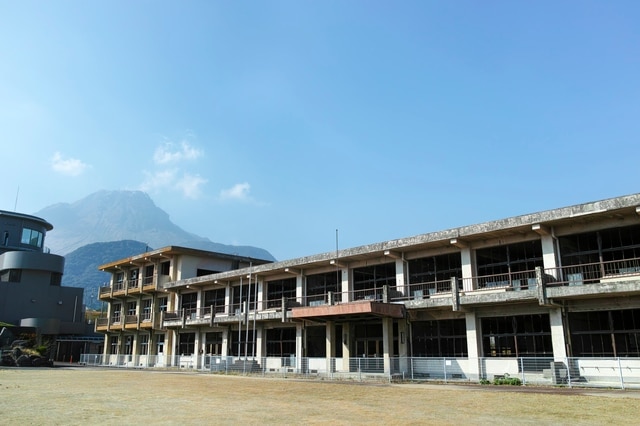
The “Ōnogoba Erosion Control Future Center” is a facility where you can learn about the disasters that struck Minamishimabara. It is attached to the Ōnogoba Monitoring Station, which observes volcanic activity on Mount Unzen. Inside, you’ll find a wide array of panel displays, and you can also see the lava dome of Mount Fugen with your own eyes.
If you visit the center, be sure to also stop by the former Ōnogoba Elementary School Disaster Building. The building, destroyed by a pyroclastic flow, is preserved and displayed as a disaster relic. This is definitely a spot worth visiting during your trip to Minamishimabara.
Name: Ōnogoba Erosion Control Future Center
Address: 2100-1 Bo, Fukae-cho, Minamishimabara City, Nagasaki Prefecture
Official/Related Site URL: http://www.qsr.mlit.go.jp/unzen/gakusyusisetu/index.htm
8. Tawaraishi Observatory
If you want to enjoy views of the Shimabara Peninsula but don’t have the time—or courage—to climb Mount Unzen, the Tawaraishi Observatory in Arie-cho, Minamishimabara City, is a great alternative. Located halfway along National Route 57 on the way to Unzen Jigoku (Unzen Hell), this scenic viewpoint offers a stunning panorama of the Amakusa Islands floating in the Ariake Sea.
It’s a popular spot among locals for viewing the first sunrise of the year, and on clear days, you can even see as far as Mount Aso. As one of the "New Top 100 Scenic Spots of Nagasaki Prefecture," it’s a must-stop destination while touring the Shimabara Peninsula.
Name: Tawaraishi Observatory
Address: Yugouchi, Arie-cho, Minamishimabara City, Nagasaki Prefecture
Official/Related Site URL: http://www.nagasaki-tabinet.com/guide/1018/
9. Fukae Archaeological and Eruption Disaster Museum
Another tourism spot related to the eruption of Mount Unzen Fugen in Minamishimabara City is the “Fukae Archaeological and Eruption Disaster Museum.” As the name suggests, this facility originally focused on archaeological finds excavated in former Fukae Town. It houses artifacts such as pottery unearthed from the Yamanotera Kajiki site, which sparked debate over whether rice farming had already reached the region during the Jomon period.
The museum now also includes materials related to volcanic disasters, with panel-based exhibits. It’s a two-in-one sightseeing spot where you can learn about both archaeology and volcanic disasters. And since the Ōnogoba Erosion Control Future Center is located just across the street, it’s practically a three-in-one attraction!
Name: Fukae Archaeological and Eruption Disaster Museum
Address: 2102 Bo, Fukae-cho, Minamishimabara City, Nagasaki Prefecture
Official/Related Site URL: http://himawari-kankou.jp/spot/1/53/
10. Tonosumi Falls
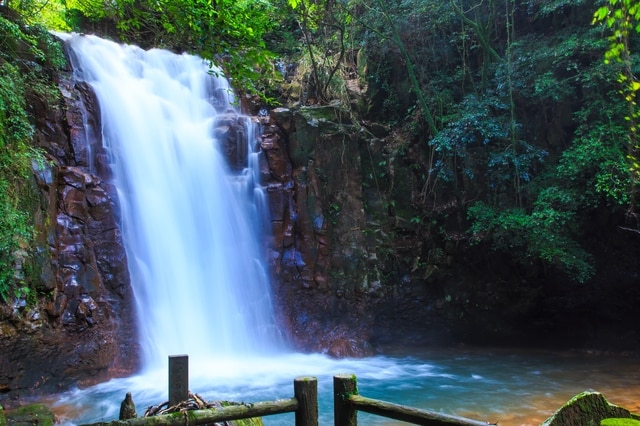
If you’re touring the Shimabara Peninsula shaped by Mount Unzen, you’ll definitely want to explore some scenic natural spots. Tonosumi Falls, located in central Minamishimabara City, is the perfect destination for nature lovers.
This grand waterfall is acclaimed as the largest in both water volume and scale in Nagasaki Prefecture. Its roaring sound and splashing mist offer a dynamic experience akin to a natural version of Splash Mountain! The entire gorge is enveloped in a cloud of countless negative ions.
Every May, the "Waterfall Festival" is held, attracting visitors seeking early summer coolness in Minamishimabara. The falls are also famous for their autumn foliage, drawing many tourists from both within and outside the city.
Name: Tonosumi Falls
Address: Nagano, Nishiarie-cho, Minamishimabara City, Nagasaki Prefecture
Official/Related Site URL: http://www.shimakanren.com/spots/detail/1355
11. Ayukaeri Falls
Located on the way from Arie Town in Minamishimabara City to the Tawaraishi Observatory, "Ayukaeri Falls" is another natural sightseeing spot you’ll want to visit in Minamishimabara. Although modest in size at about 14 meters in height, its serene beauty is captivating. Depending on the season and water volume, the waterfall changes its appearance—sometimes resembling delicate white threads, and at other times like cascading beads—delighting visitors to Minamishimabara. Its beauty is so renowned that there’s even a legend of a painter who was so awestruck by the falls that he broke his brush and returned home.
Nearby, you'll also find a teahouse offering "flowing somen" noodles, a specialty of Minamishimabara, making this a fun stop for families as well. During the summer season, many tourists visit to savor the cool sights and tastes of Minamishimabara’s prized waterfall.
Name: Ayukaeri Falls
Address: Yugouchi, Arie-cho, Minamishimabara City, Nagasaki Prefecture
Official/Related Site URL: http://himawari-kankou.jp/spot/5/107/
12. Tanimizu Terraced Rice Fields
Because of volcanic activity from Mount Unzen, flat land suitable for rice cultivation on the Shimabara Peninsula is quite limited. To overcome this, farmers in the Minamishimabara area have long utilized the mountain slopes, rich in spring water, to create terraced rice fields.
Among them, the Tanimizu Terraced Rice Fields in Minamiarima Town stand out in their beauty and are also well known as a tourist destination. These terraced fields have earned accolades such as the Minister of Agriculture, Forestry and Fisheries Award in the "Beautiful Villages of Japan Contest" and have been selected among the "Top 100 Terraced Rice Fields in Japan."
Beyond the rows of stone-walled paddies lies the lush Ariake Sea, creating a striking contrast that draws many tourists to Minamishimabara. In spring, potatoes are also planted here, offering a different landscape from the rice-growing season—another charm of this beautiful site.
Name: Tanimizu Terraced Rice Fields
Address: Shirakino Myo Tanimizu, Minamiarima-cho, Minamishimabara City, Nagasaki Prefecture
Official/Related Site URL: http://www.shimakanren.com/spots/detail/1354
13. Arie Kura Tour
The former town of Arie, now home to Minamishimabara City Hall, is a beautifully preserved sightseeing area known as the “town of village headmen” and merchants. Among its most popular attractions is a tour of five traditional “kura” storehouses steeped in history and charm.
In addition to the classic sake brewery, you can explore a miso brewery, a soy sauce brewery, and even a long-established shop famous for Minamishimabara’s specialty, hand-stretched somen noodles. From Kura No.1 to Kura No.5, there are many ways to enjoy sightseeing in Arie-cho, Minamishimabara.
The “Arie Kura Tour” event held in February is also highly recommended! With new sake tastings, treasure hunts, and garden walks, the event offers a warm welcome to all visiting tourists.
Name: Arie Kura Tour
Address: Arie-cho, Minamishimabara City, Nagasaki Prefecture
Official/Related Site URL: http://arie-kura.main.jp/
14. Kirishitan Gravestone
The “Kirishitan Gravestone,” preserved in a communal cemetery near the coast of Nishiarie Town in Minamishimabara City, is a rare historical asset discovered in 1929. The gravestone has a unique semi-cylindrical shape engraved with a cross, and even includes the name of the deceased in Roman letters. It is considered the oldest gravestone in Japan with Roman letters and a Western calendar date inscribed on it.
This important relic, which tells the story of Christianity’s presence and history in Japan, is a nationally designated historic site. It is also one of the Christian-related assets that Minamishimabara City is promoting for World Heritage registration.
Name: Kirishitan Gravestone
Address: Inside the Higashimukai Communal Cemetery, Sugawa, Nishiarie-cho, Minamishimabara City, Nagasaki Prefecture
Official/Related Site URL: http://himawari-kankou.jp/spot/5/104/
15. Kuchinotsu Port
Located at the southern tip of Minamishimabara City, Kuchinotsu has thrived as a port since 1567 when Portuguese ships first arrived. Father Alessandro Valignano, who planned the Tenshō Boys’ Mission to Europe, first set foot in Japan here at Kuchinotsu.
Today, Kuchinotsu remains a port town filled with landmarks that speak to the historical ties between Japan and the West. These include the monument marking the arrival of the Nanban ships, the golden statue of Father Valignano, and the ruins of Kuchinotsu Church. From the Nanban Bridge overlooking Kuchinotsu Port, you’ll feel the full excitement of exploring Minamishimabara’s rich historical landscape.
Name: Kuchinotsu Port
Address: Hei and surrounding area, Kuchinotsu-cho, Minamishimabara City, Nagasaki Prefecture
Official/Related Site URL: http://himawari-kankou.jp/guide/arima/2.php
16. Kuchinotsu Historical and Folklore Museum / Maritime Museum
Located just across the Nanban Bridge, the Minamishimabara City Kuchinotsu Historical and Folklore Museum / Maritime Museum is a must-visit museum when touring Kuchinotsu.
Housed in a Western-style wooden building constructed in 1899, it is the only remaining structure from the Meiji era in former Kuchinotsu Town. Inside, you’ll find various tools and materials related to the daily life and livelihoods of the port town of Kuchinotsu. It’s a valuable spot where visitors can learn about the traditions and lifestyle of Minamishimabara.
Situated at the tip of the cape that surrounds Kuchinotsu Port, you can also enjoy a scenic walk in the sea breeze after your visit.
Name: Kuchinotsu Historical and Folklore Museum / Maritime Museum
Address: 16-7 Kou, Kuchinotsu-cho, Minamishimabara City, Nagasaki Prefecture
Official/Related Site URL: http://www.city.minamishimabara.lg.jp/page1594.html
17. Hayasaki Basalt
On the coastline facing the Hayasaki Strait at the southernmost tip of Minamishimabara City lies a basalt formation, the remnant of lava flows from an undersea volcanic eruption about 4.3 million years ago. It is believed that the formation of the Shimabara Peninsula began here. The jet-black lava layers—rare in Japan—are the same type found on the coasts of Hawaii! It’s a rare and fascinating spot where you can experience a similarity with Hawaii right here in Minamishimabara.
From the Hayasaki Basalt, you can see Amakusa Shimoshima up close. The Hayasaki Strait in between is also known as one of the fastest tidal currents in Japan! The “Hayasaki Strait Arakabu,” a rockfish raised in these strong currents, is a signature brand fish of Minamishimabara.
Name: Hayasaki Basalt
Address: 291 Otsu, Kuchinotsu-cho, Minamishimabara City, Nagasaki Prefecture
Official/Related Site URL: http://www.shimakanren.com/spots/detail/1221
18. Futago Rock
Futago Rock, located at the western edge of Minamishimabara City, is a geosite formed from volcanic ejecta. It was created by wave erosion acting on andesite that erupted about 1.5 million years ago. Once composed of two large rocks, as its name "Twin Rocks" suggests, one of them collapsed during the earthquake of 1922.
Even so, the remaining rock alone makes for a unique sightseeing spot. That’s because the local nickname in Minamishimabara is “Shinsuke Rock”! From a distance, the more you look at it, the more it resembles the side profile of former Prime Minister Nobusuke Kishi. A quirky destination like this is best enjoyed with a leisurely drive along National Route 251, which runs along Minamishimabara’s coast.
Name: Futago Rock
Address: Tsunami, Kazusa-cho, Minamishimabara City, Nagasaki Prefecture
Official/Related Site URL: http://www.nagasaki-tabinet.com/guide/51564/
19. Hanafusa Observatory
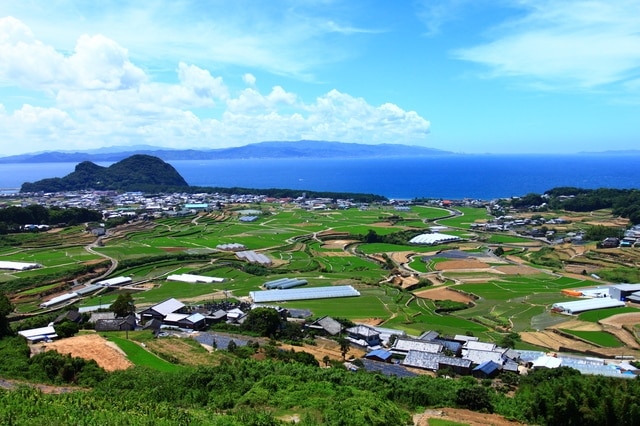
The Shimabara Peninsula, including Minamishimabara City, is a treasure trove of geological sites and has been designated as a Global Geopark. Especially along the coastline of the former Kazusa Town in the southern part of Minamishimabara City, you’ll find numerous distinctive landforms.
You can take in these unique views all at once from the Hanafusa Observatory in Kazusa-cho, Minamishimabara. Located midway up a gentle hill, this quiet observation point offers a panoramic view of Minamishimabara’s coastal landmarks like Mount Iwato, Onna Island, and the Hayasaki Cape—all sharp, volcanic shoreline formations. On a clear day, you can even see the Amakusa Islands across the sea. If you're sightseeing in southern Minamishimabara, this is a stop you won’t want to miss.
Name: Hanafusa Observatory
Address: Hanafusa, Otsu, Kazusa-cho, Minamishimabara City, Nagasaki Prefecture
Official/Related Site URL: http://www.unzen-geopark.jp/c-diary/2613
20. Festivitas Natalis
During the Sengoku period, the first Jesuit secondary educational institution in Japan, “Arima Seminary,” was established in present-day Kitaarima Town, Minamishimabara City. From its students, four boys were selected to be sent to Rome as the “Tenshō Boys’ Mission to Europe.”
In honor of this history, Minamishimabara hosts the “Festivitas Natalis” every December. The name means “Christmas Festival” in Italian, and the highlight is the reenactment of the “Nanban Procession,” a parade said to have taken place through the castle town of Arima some 400 years ago. Another major attraction is the stunning illumination of roadside trees along a stretch of about 1,600 meters.
There are also many fun events, such as the “Strawberry Rolling Race” using carts that transport Minamishimabara’s famous strawberries.
Name: Festivitas Natalis
Address: Kitaarima-cho, Minamishimabara City, Nagasaki Prefecture
Official/Related Site URL: http://www.city.minamishimabara.lg.jp/page4338.html
21. Marine Festa in Kuchinotsu
One summer event in Minamishimabara City that should not be missed is the “Marine Festa in Kuchinotsu,” held in late July. Around 2,600 fireworks, including underwater fireworks, brilliantly light up the night sky above the port town of Kuchinotsu in Minamishimabara.
Since Minamishimabara is surrounded on three sides by land, and the fireworks are launched from the surface of the water in Kuchinotsu Port, they can be viewed from nearly 360 degrees around the port—one of the event’s biggest attractions! This sea-centered fireworks festival celebrates “Marine Day,” and could only be held in a place like Kuchinotsu, which has flourished alongside the sea.
Name: Marine Festa in Kuchinotsu
Address: Around Kuchinotsu Port, Kuchinotsu-cho, Minamishimabara City, Nagasaki Prefecture
Official/Related Site URL: http://www.shimakanren.com/events/detail/1605
22. Mount Iwado
Located in the southwestern part of Minamishimabara City, Mount Iwado belongs to what’s known as a tombolo—land that juts out into the sea. Covered in lush greenery with around 190 species of native plants, this cape mountain was designated a national natural monument in 1928 as the “Mount Iwado Warm-Temperate Forest.”
It’s a must-see nature spot in Minamishimabara City, but the real hidden highlight is a cave that opens in the rocky cliffs facing the sea. When the Christian-friendly Arima clan ruled the Minamishimabara region, Buddhists were conversely persecuted. Many temples were burned, and surviving Buddhist statues were hidden away in this cave, later called “Ana-Kannon” (Cave Kannon). However, even this cave was discovered and burned by foreign missionaries.
When it comes to Christianity in Japan, the spotlight is often on the oppression during the Edo period, but before the ban on Christianity, it was actually Buddhists who were attacked. This spot provides a literal and figurative glimpse into the other side of history—truly a hidden gem in Minamishimabara.
Name: Mount Iwado
Address: Mount Iwado, Nodami, Kazusa-cho, Minamishimabara City, Nagasaki Prefecture
Official/Related Site URL: http://www.shimakanren.com/spots/detail/1350
23. Seibo Park
One of Japan’s most celebrated sculptors, Seibo Kitamura, was born in Minamishimabara City. He is best known for works such as the Peace Statue in Nagasaki Peace Park, the statue of Amakusa Shirō at the ruins of Hara Castle, and the statue of Naosane Kumagai in front of JR Kumagaya Station in Saitama Prefecture.
Seibo Park, located in Minamiarima-cho, Minamishimabara City, is a cultural plaza established in his honor. Within the park is the Seibo Memorial Hall, a wooden reconstruction of his birthplace, where you can view more than 70 of his works in various sizes.
The park itself sits on a scenic hilltop with views overlooking the ruins of Hara Castle and the Amakusa Sea. It’s a wonderful place to relax and take in the culture and beauty of Minamishimabara.
Name: Seibo Park
Address: 393-1 Hei, Minamiarima-cho, Minamishimabara City, Nagasaki Prefecture
Official/Related Site URL: http://www.nagasaki-tabinet.com/guide/560/
24. Ruins of Hinoe Castle
Hinoe Castle, located in Kitaarima-cho, Minamishimabara City, was the residence of the Arima clan—Christian feudal lords who held power over the Shimabara Peninsula. At one time, an inlet stretched up to the castle walls, and Jesuit missionaries wrote that they had never imagined such a magnificent structure existed in Japan.
Today, no buildings remain, and visitors can only imagine its former glory through the rows of stone walls. Since it is located close to the more famous ruins of Hara Castle, it’s enjoyable to visit both historical sites together.
Name: Ruins of Hinoe Castle
Address: Bo, Kitaarima-cho, Minamishimabara City, Nagasaki Prefecture
Official/Related Site URL: http://kyoukaigun.jp/visit/detail.php?id=12
◎ Summary
Minamishimabara City is full of sightseeing destinations that thoroughly convey the intertwined history of Japan and Christianity—both its light and its shadows. As a member of the Global Geoparks Network and an active participant in World Heritage registration initiatives, Minamishimabara is packed with must-see attractions all the way to the tip of the Shimabara Peninsula. Like the city’s flower, the sunflower, Minamishimabara always welcomes visitors warmly.
RELATED ARTICLES
REGIONS
CATEGORIES
FEATURED ON Nagasaki
-
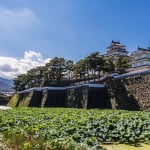
6 Recommended Sightseeing Spots in Shimabara Onsen – Enjoy Sightseeing in the Hot Spring Town of the City of Water
-
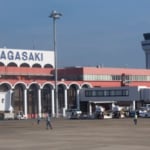
5 souvenirs you can buy at Nagasaki Airport! Find lots of delicious Nagasaki treats!
-
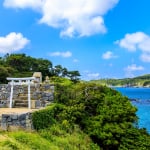
10 Recommended Hotels in Tsushima! Near Geospots to Enjoy Both the Sea and the Mountains
-

Top Attractions at Dejima, Nagasaki – Explore the History of Japan’s Isolation Period
-

Create Lasting Memories in Nagasaki! Discover 5 Must-Try Experience Spots
MOST POPULAR ON Nagasaki
-
 1
1Doha: Must-see Attractions in the Capital of Qatar
-
 2
2Toronto: 10 Things to do in this Picturesque Canadian City
-
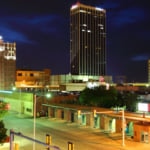 3
3Amarillo: A City Famous for It’s Amazing Canyons, Great History and Music
-
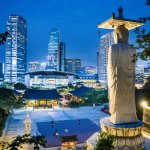 4
4South Korea: Dazzling Scenery, Rich Culture and Fascinating History
-
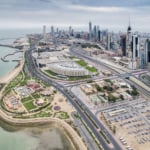 5
5Kuwait: A Country in Middle East Asia Famous for Hot Sand Dunes and Stunning Cityscape

